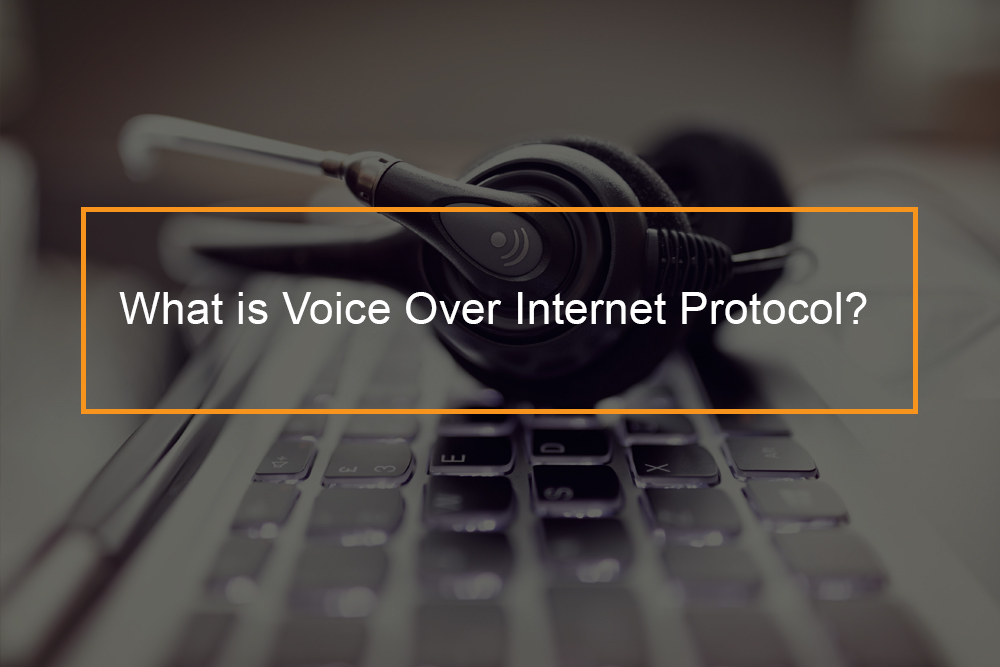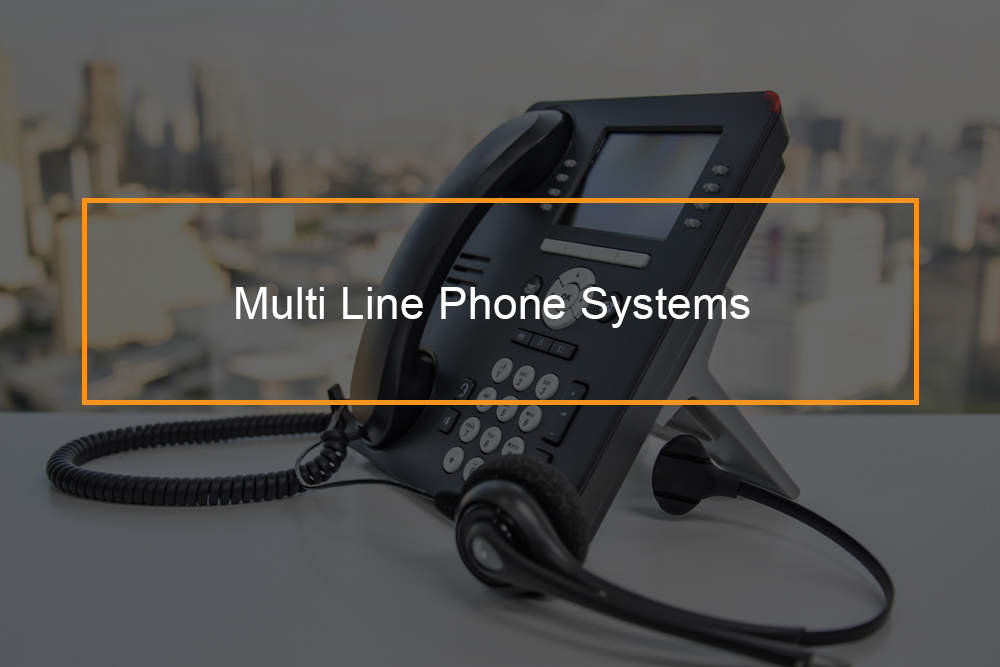Understanding VOIP
It can be defined as phone service online. If you have a quality Internet connection, you can get phone service through the internet connection instead of your local telephone company.
Some individuals use VOIP in addition to their conventional phone service because its rates are lower although it sometimes does not provide 911 service, phone directory site listings, 411 service, or other typical phone services. While lots of VoIP providers use these services, constant industry-wide means of using them are still developing.
How Does VoIP Work?
VoIP functions a lot like any other information you send online such as Slack messages or e-mail because it transforms voice interaction into data packets and sends it over an IP network. VoIP makes having a conventional phone line set up in your company or house unnecessary because you can make calls using your web connection.
Among the primary benefits of utilizing a VoIP system is that it minimizes the variety of suppliers and options you need. Instead of having separate phone and internet providers, VoIP makes it possible to integrate your voice and web communications using the same service. It’s also a lot easier to scale for development or add new features that are important to your service requirements.
Because VoIP runs over an IP network, all of your data is saved in the cloud and settings are available through a universal online dashboard or application. This dashboard enables users to access their data (contacts, phone numbers, client info), set up brand-new call settings, and include new contact numbers, whether you’re taking a trip or in the office.
With all communications options centralized, it’s not surprising that businesses have been rapidly embraced this new technology over the past few years.
VoIP Mechanics
Now that you understand how VoIP works and its benefits, let’s dive a little deeper into the innovative innovation that makes this all possible. Here, we’ll go through 5 main components: codecs, packet switching, IP phones, softphones, and ATA adapters.
-
Codecs
A codec is a piece of software application (or hardware depending on the gadget) built into your modem or accessed through an adapter. It transforms your voice into binary information. As you speak, your voice is relayed over the IP network where the Codec translates your voice and turns it into data that is sent out through the web, and then converts it back to audio when it reaches its destination.
The codec is the primary device that enables you to talk in real time to someone on the other end of the line. The codec takes in numerous voice samples in the span of a millisecond, and are behind the clarity you hear when talking to someone on the phone. If the codec is operating on a slow network or does not work effectively, callers experience a cutting out sound on the other end of the line.
-
Packet Switching
When the codec turns your voice into data, the data is divided into hundreds, sometimes thousands, of smaller pieces called data packets. These packages are transferred to their end location in a matter of milliseconds before being reassembled in their correct order.
To avoid ‘traffic congestion’ with these packages, each packet may take a different route to get to the designated destination. This procedure of sending out packets across networks (using the most efficient route at the time) is called packet switching. Packaging switching and codecs operate in turn with one another, and they need to be working appropriately to make effective VoIP calls.
-
IP Phones
By now, most people have actually used an IP phone, whether they realize it or not. As many organizations continue to switch over to VoIP, they’re also taking advantage of the additional features that include IP phones.
So what is the primary difference between a standard phone and an IP phone? An IP phone, similar to a VoIP network, is linked to the internet through WiFi or ethernet. Instead of accessing data and telephoning through a hardwired telephone line, IP phones get and send out info via the linked IP system.
Your VoIP or PBX providers give IP networks (and IP addresses). Another bonus to IP phones? All the benefits that make VoIP so popular are quickly accessible when you’re using an IP phone.
-
Analog Telephone Adapters (ATA)
An Analog Telephone Adapter (ATA) typically comes in a box (similar to a modem) that service users rent from their service provider. This box links to a modem or a router and carries out the function of a standard IP Phone by transforming voice into data and sending it out, preferably online than through the analog method.
Adopting an ATA also gives users access to some, but not all, of the functions and benefits of IP Phones. Here it’s best to speak with your VoIP provider to determine what choices work best for you.
-
VoIP Softphones
Another way to utilize your VoIP service is through a software application known as a Softphone. It is a program or app that enables you to make phone calls from other tools other than a phone (i.e., desktops, laptops, and tablets).
In truth, you may have used a softphone without even knowing it. Google Voice/Hangouts or Skype allow you to make a ‘softphone’ call. All you need is the program and a functional headset.
There are many benefits to using a softphone: cost savings is the most obvious one. The use of a softphone makes it possible for businesses to utilize the VoIP option without purchasing new IP Phones. Usually, each VoIP supplier has their program that companies will then download and use. The program is automatic, with a keypad and contact access that acts similarly to a cell phone, so most people know how to use it when they see it. Nextiva, for instance, has its softphone program called the Nextiva App.
VoIP Requirements
Thinking of establishing VoIP service in your organization? What is needed and how can you make certain your business is prepared?
Bandwidth
To get VoIP established in your businesses, you need a dependable internet connection from a reputable Internet Service Provider (ISP). The standard bandwidth required for VoIP is.1 Mbps per gadget, but it’s essential to speak to your VoIP provider about what bandwidth matches the requirements of your company. Depending on the type of information and features you’ll be using, you may need more than the standard bandwidth. You can check your bandwidth using a VoIP speed test tool.
Devices
Another crucial factor is ensuring you have the ideal devices in location. You need to have a SIP gadget on a single phone level, and a router connects your phones to the IP network system and any other required components like ATA’s or softphone installations.
A VoIP Service Provider
Finally, you will need the right VoIP company. Partnering with the best company will not only ensure a flawless setup and you are guaranteed a customer care team that is passionate about delivering solutions that best fit your company.
Advantages of VoIP for Managing Your Remote Team
Using VoIP with a remote workforce
Few of the benefits of utilizing VoIP to manage remote workforces
It makes remote working a lot easier
Until recently allowing any member of the workforce to work away from the office was nearly unheard of. Fast forward to the late 2010s, and people are working from their homes as freelancers, contractors, and full-time staff members without having to enter an office.
This is because there were software and hardware requirements only found in a workplace setup. Security concerns, as well as scheduling problems arose and it generally made more sense to have the entire workforce follow particular working hours. However, with the international expansion of business, it is possible to work with employees in other nations and locales, which makes for more innovation and creativity to boot.
Together with this, innovation has also made information more accessible and secure through the development of the cloud and VoIP. When telephony systems are hosted from the cloud, all staff members need is Internet connectivity. They can call and take their instruction, provide updates, and address concerns like they were operating in a workplace.
VoIP innovation furthermore features something called ‘Service as a Software (SaaS).’ This makes it possible for the supervisors of a company to handle their networks and hosts all the necessary software applications from the cloud. All of these conveniences combine to make remote employee management much easier than it has ever been before. The cloud also removes the need for flash drives and storage devices, which could be a security concern if they hold sensitive data.
Permits Working On The Go
Modern employees have full lives, which implies they wish to have the alternative of working both from their mobile devices and their desktop computers. VoIP makes this possible and no one has to give up their individual lives or take an ill day for a medical consultation.
There are various online options where one can work from their computer and resume where they stopped in their smart devices. This permits staff members to catch up on work throughout their downtime. Hence, the long durations in waiting for spaces or standing in line do not need to be lost.
Worker Benefits
A delighted workforce would likely be a productive one. When a company lets its employees work from home, the latter would be pleased to have this alternative. They could work from home part-time and only enter into the office when needed. They can also have a full-time job that lets them work entirely from home despite where they might be. This opens the doors for international staff members who might be more hardworking than regional ones. The currency exchange rate makes even a little income in America a big one in an establishing nation!
Even if a worker lives close to the actual workplace, many people would like to work from the comfort of their own home. They can work while dressed comfortably; look after their family and pets; work while eating, and take a break whenever they want.
Expense Saving
When workers work from home, they also save money on many financial and psychological expenses. For instance, they don’t have to spend funds on day-to-day transport on the train or bus. If they own their car, they would not need to fuel them as frequently.
It would also minimize the wear and tear on their car/motorbike/bicycle. Numerous companies pay for the transportation expenses of their staff members so that remote employees would save their organization these expenditures too.
Less Stress For Remote Workers
VoIP rules out the daily frustration many people have when they have to travel to work every day. Long commutes result in a great deal of lost time and stress trying to maneuver large crowds. Tension ultimately affects an individual physically, reducing their health in lots of ways. Working remotely would considerably save money on medical costs and consultation expenses for workers.
The choice to stay with their families while working would also considerably reduce stress. Staff members could then get quality time with their kids, spouse, or whoever they are dealing with.
Additionally, moms and dads of young children wouldn’t feel guilty about leaving their kids in the care of others. If one is a homemaker already, they would love the opportunity to earn more. Telecommuting through VoIP allows for a smooth deal between companies and employees, which essentially makes all these benefits possible.
Higher Productivity
As mentioned above, a better labor force is more productive. VoIP guarantees that companies can effectively convey any directions to their workers regardless of the location. When workers enjoy the benefits of working from home, they are likely to work harder and give better results and can even become fond of their employers. Moreover, when staff members are psychologically unwinded concerning their home life, they would have the ability to work more attentively as the use VoIP would imply that employees are working with no psychological interruptions at home.
More Flexibility
Using VoIP enables companies to employ workers according to their needs. They might even decide to hire a freelancer for a short-term project instead of working with a full-time worker. This would significantly reduce employee turnover rates. What’s more, numerous experts in content writing, graphic style, and other service prepared locations are now working on their terms. This indicates any business could get a high-quality worker without having to give them a substantial advantage package or competing with other organizations. The professional, in turn, would be happier to get a high-paying gig that would let him be free to get projects from other business as well.
Scaling Up Or Down Becomes Easier
Operating in lots of markets is far from manageable. We do not know what could happen, so preparation is essential. The VoIP method enables companies to do this more efficiently by allowing a versatile and changeable structure.
If there are any changes, organizations using VoIP can expand or contract very quickly. Doing so can save a business a lot of daily expenses as well as overhead costs.
Making it possible to work across locations
Some individuals prefer traveling and walking around to staying in one place. They may also not have any monetary and emotional obligations that trigger them to find work. They could also have particular skill sets that would make them valuable additions to any company. In fact, they may be hired because they move a lot. Companies often need their workers to travel for meetings, conferences, and even research studies. Hence, VoIP is a practical tool for connecting everyone even when one or all parties are on the go. This makes for much easier and more precise updates.
VoIP allows companies and their employees to have the same number even when they work from various areas. This not only assists them to keep in touch with each other but allow them to maintain a sense of professionalism. This is advantageous for both the business regarding getting work done and the customers in terms of staying on top of tasks and deadlines.
Teamwork
The possibility of video conferencing within VoIP gives everyone a means to link even if they can’t meet face to face. Thus, staff members would be able to convene with their team members and clients without leaving home. This would contribute to their comfort, saving a lot of time as no one has to travel to participate in a meeting.
VoIP video conferencing also makes sure that staff member can stay linked while getting their work done. They might have to travel to various locations because of their work or just personal plans, whatever the case, their work can go on smoothly, and they can quickly connect with anybody they want. Cooperation would end up being even more seamless.
The benefit of working from home has not just been accepted by the millennium generation but likewise by experienced older staff members who are more advanced in their careers and are trying to find more versatility. The general savings and complete-worker satisfaction have exceeded the cons for working from home in today’s busy service world.
Reporting And Monitoring
One of the primary problems of using remote labor forces in the past was that it was almost difficult to monitor them. If a staff member slacks off or gets somebody else to do their task, companies would be none the wiser until someone saw the missing or low-grade work. By then, the actions of the worker might currently have cost the business a lot of time, effort, and money.
However, VoIP provides a tracking function, which makes it possible for an employer to check up on remote employees. They can measure the efficiency of staff members with a number of reports every day, month or year. It can also track and monitor how a customer is responding to the actions and output of the business.
Some staff members may not be comfortable with being tracked all the time, and they may also not need tracking. VoIP tracking is voluntary and can be used when necessary so as not to intrude on the worker’s privacy.
Hour Utilization
When remote workforces are released from the restraints of the work schedules and timings, they may, in fact, enjoy their job more. If their employer allows it, staff members can choose when they wish to work during the day. This means that if one does not feel productive after they’ve had their lunch, they can easily postpone their work. Lots of individuals might feel fresh in the early morning, so they can choose to wake up early and work at their highest productivity time. Then again, some might work better at night. As long as they clarify this with their company and supervisor, working at odd hours should not be an issue. VoIP could allow reports to be processed and examined according to each person’s work system. As an outcome, lots of employees might end up putting in more hours and handling more work.
Clarity Of Communication
When a supervisor or head of a department has to work with a remote team, there is the concern of a communication gap. The employee may not see the messages in time or they, in turn, may forget to send a crucial reminder or update. Additionally, staff members working from another location can take a break any time they like and use numerous faster ways that may reduce the quality of their work.
All this might make it very hard for any supervisor to make sure everyone is working as they need to be. With the use of VoIP, nevertheless, there are some guidelines that employees would have to follow. The physical location does not matter.
More contact and availability.
Managing a remote and virtual work team needs the presence of a capable supervisor. With VoIP, managers can ensure they are all set and on the scene just as much as workers are required to be. In reality, remote workers may anticipate a manager to be much more responsive than in a physical circumstance.
VoIP phone systems keeps workers and supervisors alike on high alert. The door would constantly be open for conversation, questions, and feedback when you work with VoIP and a remote labor force system. This makes the remote team more protected, more confident, and more willing to offer their finest in every way. It is vital that remote workers have access to their supervisors; otherwise, there would be a great deal of miscommunication and disharmony included.
Utilizing The Internet
VoIP allows both employers and employers to use the Internet connection for interaction. This is especially useful when video conferencing, hence no landline concerns like extra expenses, downtime for upkeep, or bothersome location services. Traditionally, landline and cable business also provide their users with a tough time. The bundles offered for global and bulk dialing might cost more than separate routine calls. Using VoIP would, therefore, do away with all this estimation and uncertainty. All one would need to pay for is the Internet connection, which is being used for many other elements of business at the very same time.
VoIP’s usefulness is extremely suitable in the modern world. Undoubtedly, it encourages business to enter the fold and upgrade their systems to stay up to date with the changing times. Employees would immensely appreciate the move, and even old-fashioned companies would concur.
Who is the best VoIP supplier?
Leading VoIP provider
-
Skype
Skype is probably the best-known VOIP option in existence, thanks to its effective service over the years. It is now owned and run by Microsoft, which means that Skype is combined with Windows 10, but the service is also available on the internet, Mac OS, Linux, all significant mobile operating systems, the Xbox and some smart TVs. It is constantly getting routine upgrades and overhauls. Skype audio and video calls are free of charge from one Skype account to another, anyplace in the world. Calling conventional phone numbers and receive calls from them at your own number will require you to either subscribe to a monthly minute bundle or spend money for a credit fill-up. Their rates are competitive and offer options for both landlines and mobile, and some country plans can be had for just $3.60 a month. An example of a national plan for some countries is like World Unlimited minutes, which permits unrestricted calls to 63 countries for $16.80 a month.
-
Google Hangouts
This is Google’s rival to Skype and it does not have nearly the very same prestige; however, it is available in the very same places, and it is integrated with mobile platforms. The Hangouts app is mostly for chats; however it can likewise replicate standard text messaging, and make video calls and voice contacts us to landlines, especially if you combine it with brand-new hardware options. Calling most numbers in the United States is totally free. Rates for various countries and companies vary from a single cent per minute to more than a dollar, and credit can be filled up.
Hangouts comes pre-installed in most recent Android phones, and messages to other Hangouts users will default to the Google’s chat app settings instead of utilizing SMS. Installing the Hangouts Dialer makes it possible to make a standard call. Apps or extensions are also readily available on the desktop through Chrome, on Chrome OS devices, and the iPhone and iPad.
-
RingCentral
Although it’s based out of the UK, RingCentral is one of the most well-reviewed VOIP services available all over the world. It’s certainly more for organization users than customers and comes with advanced functions you would anticipate from a tier-one service provider. With a network backbone in the U.S., there shouldn’t be any extra lag from the company’s headquartered area, and its rates make it hotly competitive with its contemporaries.
Plans begin at $20 monthly per user with support for approximately four people per conference, and limitless phone and conference calls, all the way up to the $50 supreme bundle, which provides you many free minutes, approximately 75-person video conferences and an exclusive voicemail transcription service. There are many plans in between too, with extra bonuses for new users and numbers for those who desire them.










